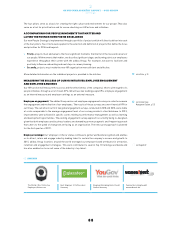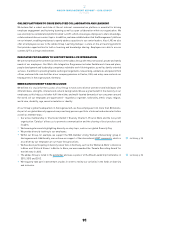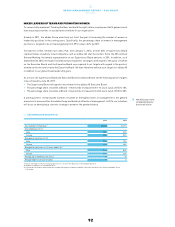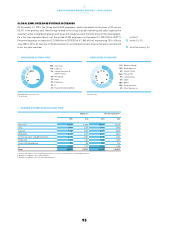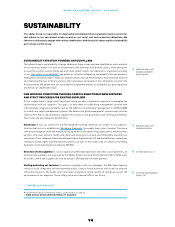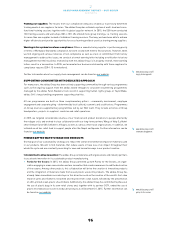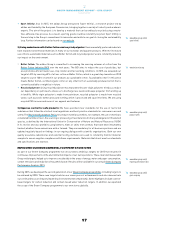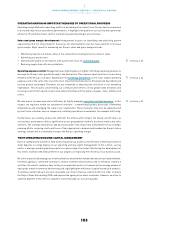Reebok 2015 Annual Report Download - page 102
Download and view the complete annual report
Please find page 102 of the 2015 Reebok annual report below. You can navigate through the pages in the report by either clicking on the pages listed below, or by using the keyword search tool below to find specific information within the annual report.
GROUP MANAGEMENT REPORT – OUR GROUP
Sustainability
98
2
DRIVING ENVIRONMENTAL IMPROVEMENTSATOUR SUPPLIERS’ FACTORIES
In our supply chain, activities focus on helping suppliers establish sound environmental management
systems at their manufacturing plants to best reduce their negative environmental impacts. We have
guidelines and training programmes in place for our suppliers, using the environmental performance of
our own production sites as best-practice examples.
Certification of factories: The majority of our footwear sourcing volume is produced in factories which are
OHSAS 18000 and/or ISO 14001 certified. The remaining part of our footwear sourcing volume is produced in
factories that have management systems in place but have not yet been certified. All footwear factories are
regularly assessed against the adidas Group’s standards on environment and workplace health and safety.
Advanced chemical management programme: Chemical management and innovation is a key
component of our Sustainability Strategy. It is about identifying better ways to create products while also
reducing the environmental footprint of the company’s operations. Our programme comprises the four
elements product safety, environmental audits, chemical input and disclosure/transparency.
•Product safety: Since pioneering the Restricted Substances Policy in 1998, which is updated annually,
the company continues to develop policies which ban or restrict chemicals in our products.
•Environmental audits: A series of guidelines for suppliers with comprehensive and detailed standards
on handling, storage and disposal of chemicals as well as standards for waste water treatment and
effluents are the basis for the factory inspections and assessments conducted by our SEA team and
external auditors. In 2015, the company conducted 138 environmental audits (including chemical
management audits) at its suppliers’ factories (2014: 143).
•
Chemical input: In addition to the established use of the bluesign technologies bluefinder which guides
our suppliers in choosing the right chemicals, we successfully phased out the use of long-chain PFCs
in 2014.
•Disclosure/transparency: As part of our approach in enhancing disclosure practices and transparency
within our supply chain, the adidas Group has actively promoted reputable platforms such as the Institute
of Public and Environmental Affairs (IPE) China Water Pollution Map and China Air Pollution Map and
achieved the disclosure of 50% of all ‘wet processes’ across its global supply chain at the end of 2015.
ENGAGINGWITH AVARIETYOF STAKEHOLDERS GLOBALLY
At the adidas Group, we openly engage with numerous stakeholders, involving them in key social and
environmental decisions that shape day-to-day operations. Through active participation in, for example,
the Better Cotton Initiative (BCI), the Sustainable Apparel Coalition (SAC), the Leather Working Group (LWG)
and the AFIRM Working Group, we work closely with leading companies from a variety of sectors to develop
sustainable business approaches and to debate social and environmental topics on a global level. This is
also supported by our membership in organisations such as the World Federation of the Sporting Goods
Industry (WFSGI), the Fair Factories Clearinghouse (FFC) and the Fair Labor Association (FLA). In addition,
we build awareness, capacity and knowledge of laws and rights among factory management and workers by
partnering with leading providers such as the EHS Academy in China and the ILO’s Better Work programme.
A key element of our transparent communication is the disclosure of our global supplier factory list on
our website. First published in 2007 and updated twice a year, it is complemented with factories that
manufactured products for major sport events such as the FIFA World Cup or Olympic Games.
www.adidas-group.com/s/
environmental-guidelines
www.adidas-group.com/s/
supply-chain-structure


